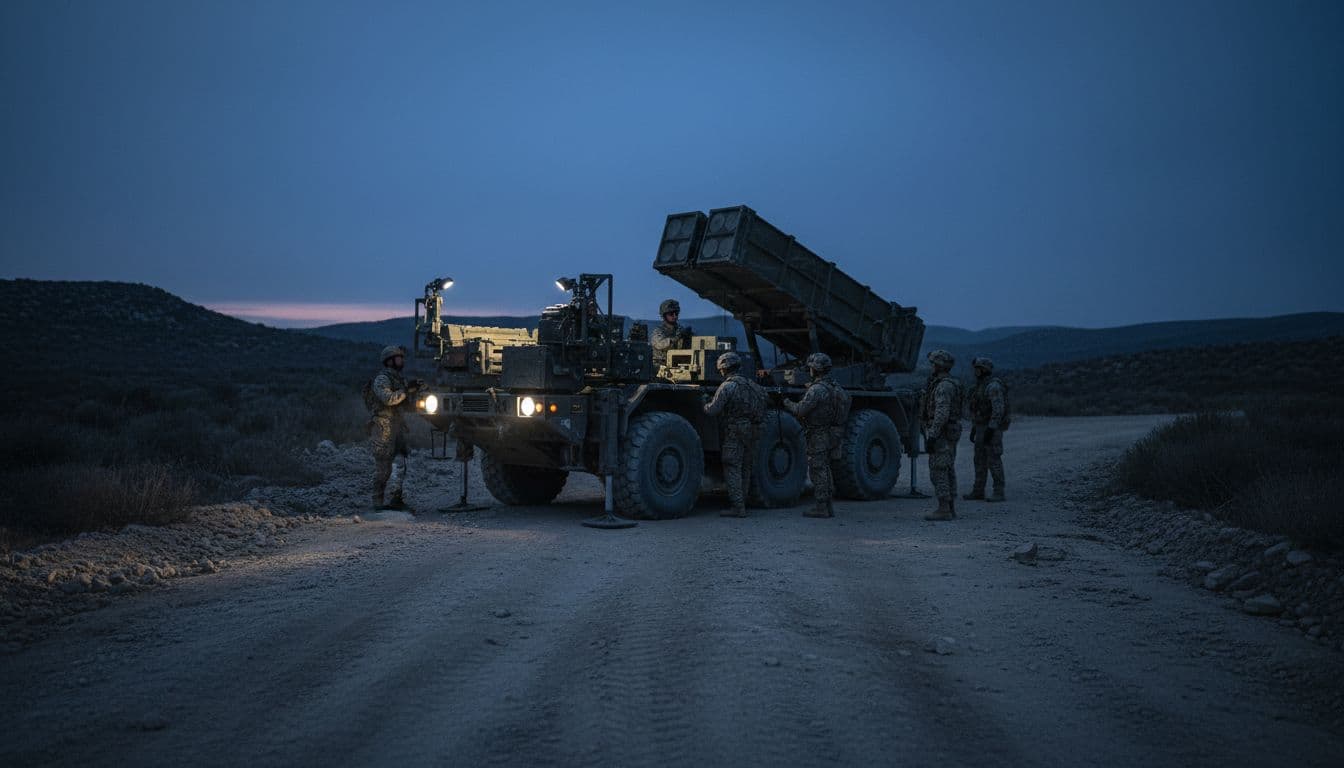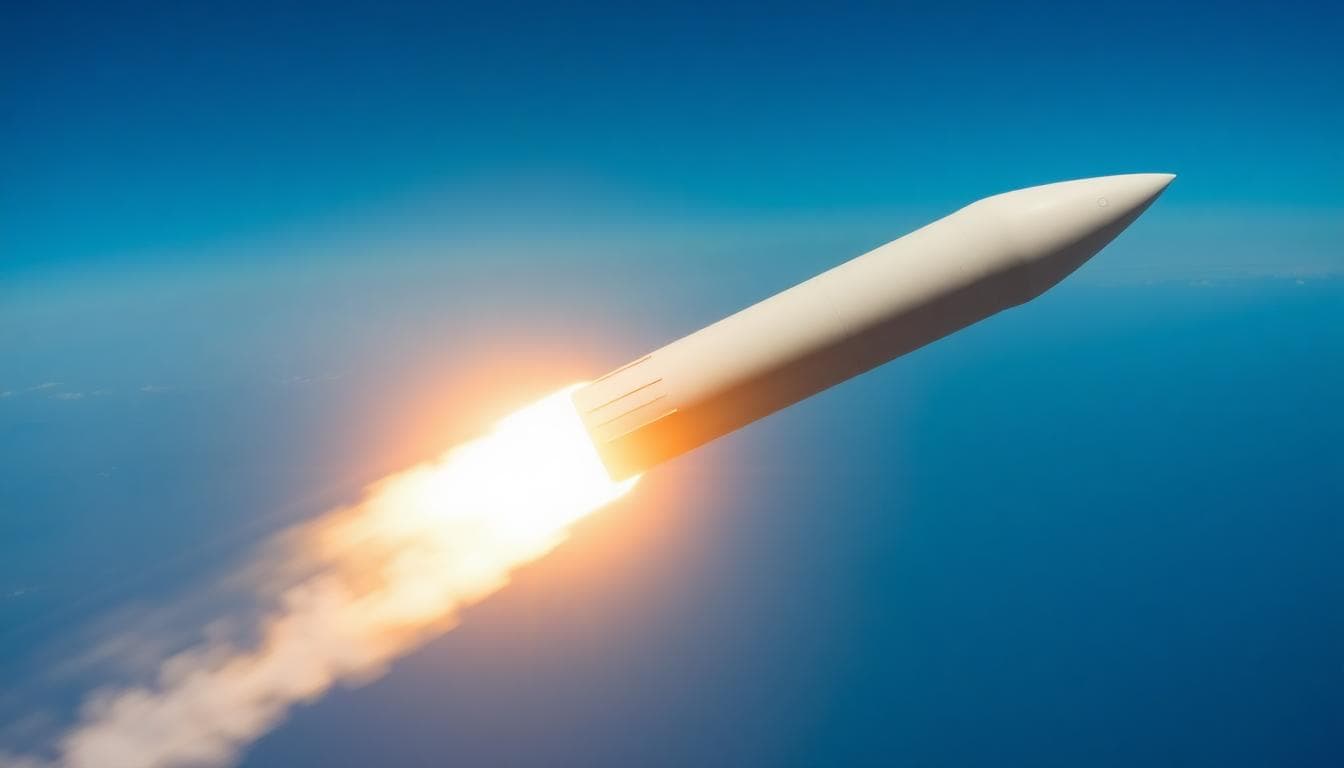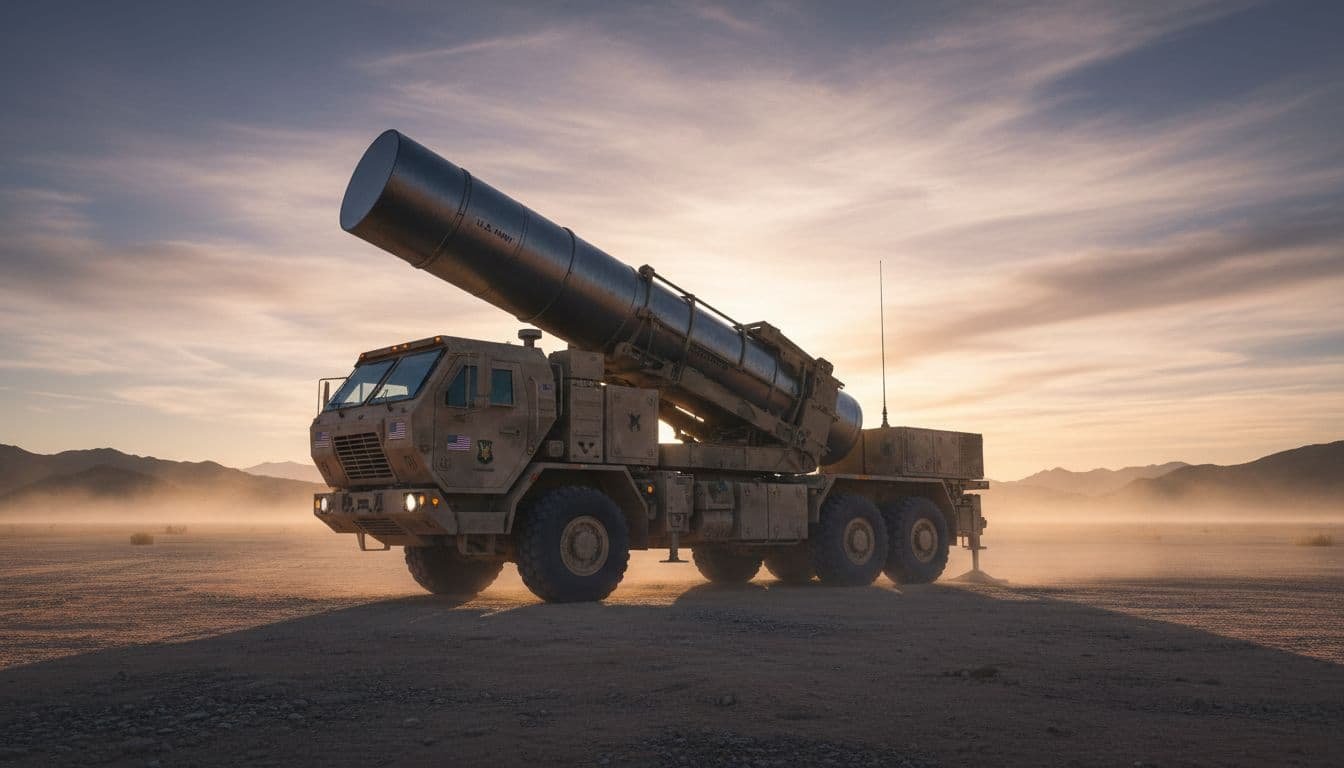Hypersonic weapons are moving from test ranges to real launchers. A US defense startup, Castelion, is working with the Army and Navy to integrate its Blackbeard hypersonic strike weapon onto mobile platforms. If this works, the Pentagon could field faster, cheaper, and more flexible hypersonic options. In this guide, you will see what’s new, why mobile launch matters, the cost angle, and how this affects US deterrence.
What Are Hypersonic Weapons?
Hypersonic weapons travel at more than five times the speed of sound. Unlike traditional ballistic missiles, many hypersonic systems can maneuver mid-flight, change direction, and fly lower in the atmosphere. That mix of speed and agility makes them harder to detect and intercept.
- Hypersonic glide vehicles: Launched by a rocket, then glide and maneuver to the target.
- Air-breathing cruise missiles: Powered by high-speed engines for sustained hypersonic flight.
Why This News Matters
Castelion says it has contracts to integrate its Blackbeard weapon with existing Army systems and to coordinate with the Navy. One likely Army platform is HIMARS, the High Mobility Artillery Rocket System. HIMARS is road-mobile, quick to set up, and proven in recent conflicts. If hypersonic rounds can be fired from mobile launchers like HIMARS, the US gets three big advantages:
- Mobility. Launchers can move, hide, and relocate after firing. That improves survivability.
- Distributed firepower. More launchers spread across wider areas, which complicates enemy planning.
- Faster fielding. Using existing platforms reduces the time and cost to deploy new weapons.

Inside Blackbeard: The Pitch
Blackbeard is positioned as a hypersonic strike weapon designed for mass production at a fraction of legacy costs. The company’s goal is thousands of units per year, priced in the hundreds of thousands per missile. That is a bold claim, since many hypersonic programs have been criticized for being too expensive and slow to field.
If Blackbeard hits those targets, the Pentagon gains:
- Volume. Stockpiles measured in thousands, not dozens.
- Training and tactics. More rounds allow realistic training and live-fire exercises.
- Deterrence. Adversaries must plan for larger salvos from multiple locations.
The Budget and Integration Piece
Early integration steps often include:
- Mechanical fit. Adapters, canisters, and rails to fit existing launchers.
- Fire control. Software and electronics so the launcher can talk to the missile.
- Logistics. Storage, transport, maintenance, and reloading procedures.
- Safety and test events. Ground checks, captive-carry tests, and live shots.
Terms of the contracts were not public, and future funding lines may support similar integration. The key idea is to make hypersonic weapons compatible with current systems; that speeds the path to operational use.
How Mobile Hypersonics Change the Game
- Survivability. A fixed site is easy to target. A truck that moves daily is not.
- Deception. Units can disperse, use decoys, and shift routes to confuse sensors.
- Launch windows. Mobility creates more places to shoot from and more angles to threaten.
- Regional presence. Allies might host mobile batteries more easily than fixed sites.
In short, mobility makes hypersonics more usable in day-to-day deterrence and crisis response.

Cost, Scale, and the “Good Enough” Debate
A big challenge with hypersonics is cost per shot. If each round is several million dollars, you cannot buy many. That limits training and massed strikes. A lower-cost hypersonic, even if it trades a bit of range or payload, can be more useful in real operations.
Planners ask a simple question: Is a good-enough, affordable hypersonic more useful than a perfect, expensive one? Often, yes. In combat, quantity has a quality of its own. Large salvos can overwhelm defenses. For commanders, the ability to reload and sustain operations matters as much as headline speed.
Industry Landscape
Several US firms are pursuing hypersonics, from established primes to newer entrants. This mix is useful for the Pentagon because:
- Multiple designs reduce risk if one path falters.
- Competition can help lower unit cost.
- Diverse approaches can fill different mission sets, from anti-ship to land attack.

What It Means for Allies and Adversaries
- Allies. Mobile batteries can deploy for exercises, reassure partners, and integrate with joint networks. They also fit roads, ports, and rail common in allied countries.
- Adversaries. Must invest more in surveillance and counter-strike capabilities, and accept higher uncertainty. Mobility raises the cost of aggression.
- Arms race dynamics. As hypersonics spread, defenses must evolve. Expect more investment in sensors, interceptors, jammers, and deception.
Risks and Open Questions
- Testing tempo. Can industry validate performance, reliability, and safety quickly?
- Integration complexity. Will software, communications, and targeting fit smoothly on existing launchers?
- Logistics. Can units store, transport, and maintain large numbers of hypersonic rounds safely?
- Training. How fast can crews become proficient with new procedures and safety rules?
- Policy. Where and how will the US posture mobile batteries to avoid escalation while signaling strength?
Making hypersonic weapons mobile could change the balance of deterrence. If Blackbeard delivers on cost and scale, commanders gain a flexible, survivable tool that can deploy fast and fire from many places. This is less about a single wonder weapon and more about building a network of mobile launchers that can shoot often, move quickly, and keep pressure on any adversary. Watch three signals next: successful integration tests on existing launchers, credible cost-per-shot numbers, and evidence of mass production. If those improve, mobile hypersonics may become part of everyday US force posture.
Key Takeaways
- Mobile launchers make hypersonic weapons harder to target and easier to deploy.
- Castelion’s Blackbeard aims for lower cost and mass production, which could change training and operations.
- Integration with systems like HIMARS would speed fielding and expand options for the Army and Navy.
- The winners will balance performance, reliability, and affordability at scale.
To contact us click Here .







